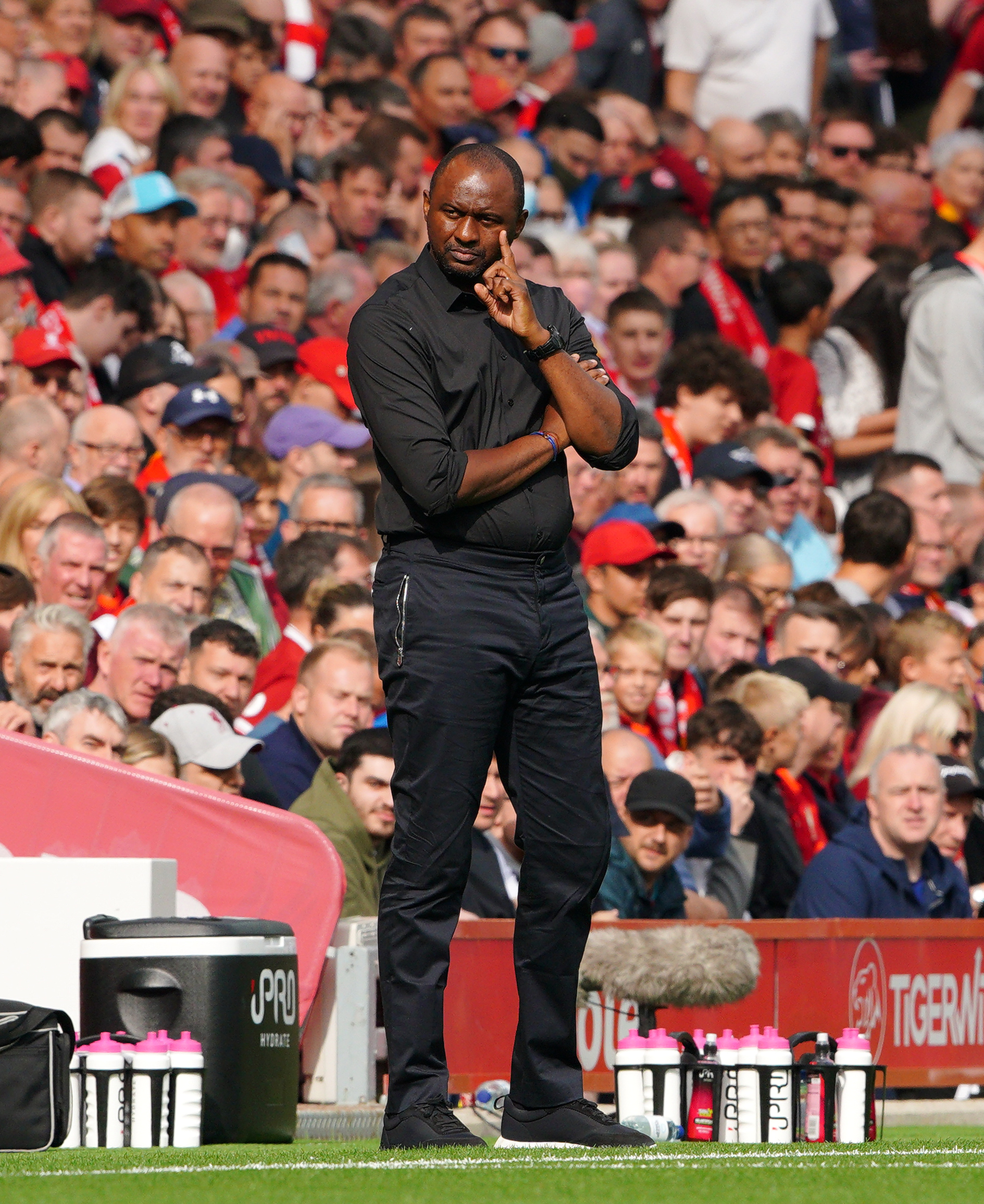Revamped academy can help Palace compete with London rivals – Patrick Vieira

Crystal Palace manager Patrick Vieira believes the club’s redeveloped academy will help put them on a level footing with rival London teams.
The 45-year-old was present for Thursday’s official opening of the Copers Cope Road site, which cost £20million and has transformed the facilities for those in the youth setup.
Palace’s academy stars previously had to share the base with Goals Beckenham North, a children’s amusement centre and a gym open to the public, but during the past 18 months it has been turned into one of the best academies in the country.
This is our future.— Crystal Palace F.C. (@CPFC) October 28, 2021
It should mean that instead of south Londoners like Jadon Sancho, Callum Hudson-Odoi and Emile Smith Rowe choosing clubs further afield to nurture their ability, future players of a similar talent can get everything they need with the Eagles and their new world-class facility.
Vieira said: “I can’t talk about 20 years ago and how it used to be, but I think having a facility like this will allow us to fight more with the teams around us and to convince young players around this area to stay around this area.
“When you bring a young player here and let him visit a facility like this, it has everything that will allow a young player to develop and become a Crystal Palace player, a Premier League player.
“We have the tools to have this ambition, to bring those best young players from the areas through.”
The best features, fun and footballing quizzes, straight to your inbox every week.
Vieira only joined Palace in the summer in what was his third senior managerial appointment, but his coaching journey started in the Manchester City academy.
The current Premier League champions have long boasted one of the best homes for younger players and, while the Eagles boss would not be drawn on which venue is better, Vieira is pleased the uniqueness of south London has remained at the Beckenham base despite significant investment.
⭐️ 𝐎𝐟𝐟𝐢𝐜𝐢𝐚𝐥𝐥𝐲 𝐨𝐩𝐞𝐧 ⭐️#CPFCpic.twitter.com/0cbVmaGz7S— Crystal Palace F.C. (@CPFC) October 28, 2021
He added: “It is a different type of academy. This football club here, it needed an academy which represented the local community, south London. City went in a different way.
“I’m not saying this one is better than this one. They are different types of academy. But this represents really well what south London is about.
“What’s important for the club is to have the tools that will help young players develop and challenge themselves. To have a place like this, even for managers and coaches in the academy, the chairman will be more demanding as well.
“How can we provide more players for the first team? This club was already recognised for its ability to develop young players. But now this is here it’s a case of how can we improve that? How can we bring through even better players?”
Wilfried Zaha is one of a number of players who have made the journey from Palace’s academy into the first team over the years and another, England boss Gareth Southgate, cut the ribbon to officially open the site on Thursday.
Former managers Roy Hodgson and Alan Smith were in attendance alongside a plethora of players who have represented the club and who played a part in chairman Steve Parish’s dream becoming a reality, with Premier League survival one of the keys to this long-term vision bearing fruit.
❤️💙#CPFCpic.twitter.com/wYAxqdhTeC— Crystal Palace F.C. (@CPFC) October 28, 2021
Vieira has already shown a willingness to give younger players at the club a chance, with 18-year-old Jesurun Rak-Sakyi handed a debut at Chelsea in August and numerous others used in pre-season or having trained with the first team.
“What is important for us is we have to create a pathway for those players,” the former France midfielder insisted.
“The best ways to develop is to play games. It’s important for us to have a clear plan as to how we help those special talents develop. We have to create space for them as well.
“It’s part of the project, I think. The chairman was really clear about what he wanted to build at this football club. We are really close. Coming to watch the Under-23s is really important for me, to know those players from the academy.
“We have to reward them with the way they conduct themselves, the way they play, the way they improve.
“Some of the Under-18s came to the first team to train with us because they’d been doing really well. We have to show them that they are part of this football club and part of our plans. We have to give them that kind of support and belief that, if they do well, they’ll have a chance.”
